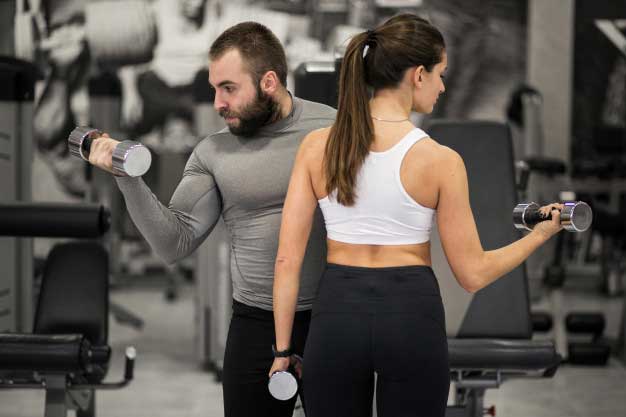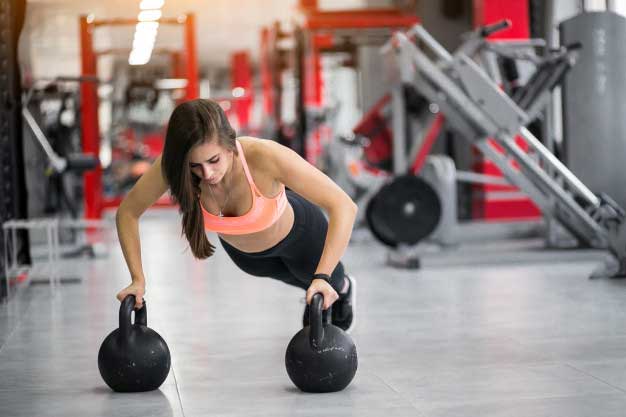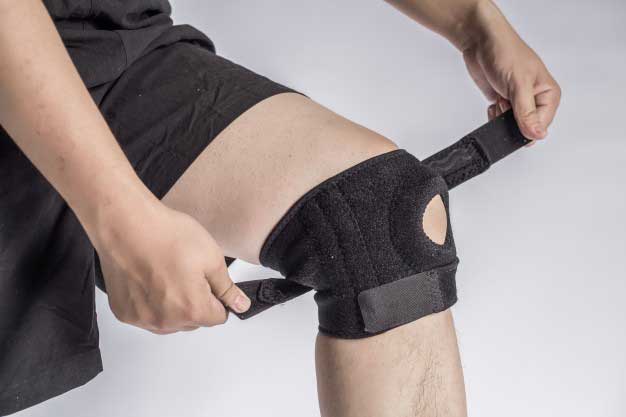Our Events & Classes



Bodybuilding is the use of progressive resistance exercise to control and develop one's musculature for aesthetic purposes. An individual who engages in this activity is referred to as a bodybuilder. In competitive bodybuilding, bodybuilders appear in lineups and perform specified poses (and later individual posing routines) for a panel of judges who rank the competitors based on criteria such as symmetry, muscularity, and conditioning. Bodybuilders prepare for competitions through the elimination of nonessential body fat, enhanced at the last stage by a combination of extracellular dehydration and carbohydrate loading, to achieve maximum muscular definition and vascularity, as well as tanning to accentuate the contrast of the skin under the spotlights. Bodybuilders may use anabolic steroids and other performance-enhancing drugs to build muscles.
Cardiovascular fitness is the ability of the heart and lungs to supply oxygen-rich blood to the working muscle tissues, and the ability of the muscles to use oxygen to produce energy for movement. This type of fitness is a health-related component of physical fitness that is brought about by sustained physical activity. A person's ability to deliver oxygen to the working muscles is affected by many physiological parameters, including heart rate, stroke volume, cardiac output, and maximal oxygen consumption. Understanding the relationship between cardiorespiratory fitness and other categories of conditioning requires a review of changes that occur with increased aerobic, or anaerobic capacity. As aerobic/anaerobic capacity increases, general metabolism rises, muscle metabolism is enhanced, haemoglobin rises, buffers in the bloodstream increase, venous return is improved, stroke volume is improved, and the blood bed becomes more able to adapt readily to varying demands. Each of these results of cardiovascular fitness/cardiorespiratory conditioning will have a direct positive effect on muscular endurance, and an indirect effect on strength and flexibility.


An individual who engages in this activity is referred to as a bodybuilder. In competitive bodybuilding, bodybuilders appear in lineups and perform specified poses (and later individual posing routines) for a panel of judges who rank the competitors based on criteria such as symmetry, muscularity, and conditioning. Bodybuilders prepare for competitions through the elimination of nonessential body fat, enhanced at the last stage by a combination of extracellular dehydration and carbohydrate loading, to achieve maximum muscular definition and vascularity, as well as tanning to accentuate the contrast of the skin under the spotlights. Bodybuilders may use anabolic steroids and other performance-enhancing drugs to build muscles.
The kettlebell is a cast iron or cast steel ball with a handle attached to the top (resembling a cannonball with a handle). It is used to perform many types of exercises, including ballistic exercises that combine cardiovascular, strength and flexibility training. They are also the primary equipment used in the weight lifting sport of kettlebell lifting.


A personal trainer is an individual certified to have a varying degree of knowledge of general fitness involved in exercise prescription and instruction. They motivate clients by setting goals and providing feedback and accountability to clients. Trainers also measure their client's strengths and weaknesses with fitness assessments. These fitness assessments may also be performed before and after an exercise program to measure their client's improvements in physical fitness. They should also educate their clients in many other aspects of wellness besides exercise, including general health and nutrition guidelines.
Physical therapy (PT), also known as physiotherapy, is one of the allied health professions that, by using evidence-based kinesiology, electrotherapy, shockwave modality, exercise prescription, joint mobilization and health education, treats conditions such as chronic or acute pain, soft tissue injuries, cartilage damage, arthritis, gait disorders and physical impairments typically of musculoskeletal, cardiopulmonary, neurological and endocrinological origins.


Lorem ipsum dolor sit amet consectetur adipisicing elit. Earum quaerat quibusdam corrupti quod, vero molestias eaque eos voluptas, alias expedita soluta quasi at aliquam eligendi, repudiandae perspiciatis accusamus dignissimos optio? Lorem ipsum dolor sit amet consectetur adipisicing elit. Earum quaerat quibusdam corrupti quod, vero molestias eaque eos voluptas, alias expedita soluta quasi at aliquam eligendi, repudiandae perspiciatis accusamus dignissimos optio? Lorem ipsum dolor sit amet consectetur adipisicing elit. Earum quaerat quibusdam corrupti quod, vero molestias eaque eos voluptas, alias expedita soluta quasi at aliquam eligendi, repudiandae perspiciatis accusamus dignissimos
The TRX System, also known as Total Resistance exercises, refers to a specialized form of suspension training that utilizes equipment developed by former U.S. Navy SEAL Randy Hetrick. TRX is a form of suspension training that uses body weight exercises to develop strength, balance, flexibility and core stability simultaneously. It requires the use of the TRX Suspension Trainer, a performance training tool that leverages gravity and the user’s body weight to complete the exercises. TRX's designers claim that it draws on research from the military, pro sports, and academic institutions along with experience gathered from the TRX team, who work with thousands of athletes, coaches, trainers, first responders, subject matter experts, professors, and service members in all branches.
